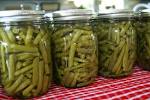My son, Nicholas, decided to write an essay about GMO’s for his Language Arts class. I encouraged him to use researched based information or information based on scientific experiments. This is what we found:
 • Genetic Modified Organisms are plants and animals with changes in their DNA. These changes are made to improve their performance and availability. These genetic changes have been occurring for ten thousand years when farming began.
• Genetic Modified Organisms are plants and animals with changes in their DNA. These changes are made to improve their performance and availability. These genetic changes have been occurring for ten thousand years when farming began.
• Today, nearly all foods have been genetically modified. However, there are only 9 commercially approved GM crops available in the U.S.: soybeans, corn (field and sweet), canola, cotton, alfalfa, sugar beets, summer squash, papaya and potatoes. Soon GM apples will be coming to local markets. The nutrition and composition of these crops are the same as non-GMO’s foods. Also, our bodies digest them the same way as non-GM crops.
• These GMO’s do not present any new health risks—they do not cause new allergies, cancer, infertility, ADHD or any other diseases or conditions. Scientific authorities around the world such as the U.S. National Academy of Sciences, United Nations Food and Agriculture Organization, World Health Organization, the American Medical Association and the American Association for the Advancement of Science have examined hundreds of scientific studies. In conclusion, they found that GMO food crops do not pose more risks to people, animals or the environment.
• Before they reach the market, crops from GM seeds are studied extensively to make sure they are safe for people, animals and the environment. Today’s GM products are the most researched and tested agricultural products in history. Global regulatory agencies in seventy countries have reviewed the safety information and found no risks. 
• In the United States, GM crops are reviewed by at least 2, and sometimes 3, federal regulatory agencies: The U.S. Department of Agriculture (USDA), the Environmental Protection Agency (EPA) and the Food and Drug Administration (FDA).
While Facebook and other social media sites do an excellent job of spreading information, we have to remember that sometimes the information isn’t completely accurate. As with anything, the Extension office recommends using reputable sites and resources when doing research. The Extension office is glad to assist with researched based information for any questions or concerns you may have.
 For more information on food safety, contact your local Family and Consumer Sciences Extension Agent at 1-800-Ask-UGA1
For more information on food safety, contact your local Family and Consumer Sciences Extension Agent at 1-800-Ask-UGA1
 Si usted es un entusiasta conservante de alimentos puede que ya esté utilizando el libro “So Easy to Preserve”. Este es un fantástico recurso lleno de recetas aprobadas y ofrece explicaciones precisas de los procedimientos y procesos que todos debemos seguir para garantizar una experiencia segura y exitosa. Póngase en contacto con su oficina local de Extensión para preguntar sobre como adquirir la más reciente versión del libro “So Easy to Preserve”. Nos estamos preparando para los meses más cálidos y la disponibilidad de los productos frescos y deliciosos aumentará. Considere el uso de procesos como el enlatar, congelar, secar o encurtir. ¡Prepare deliciosas mermeladas y jaleas con sus frutas favoritas y disfrute de los productos durante todo el año! ¡Ah y como parte de la experiencia prepárese para escuchar el esperado sonido de un frasco bien sellado!
Si usted es un entusiasta conservante de alimentos puede que ya esté utilizando el libro “So Easy to Preserve”. Este es un fantástico recurso lleno de recetas aprobadas y ofrece explicaciones precisas de los procedimientos y procesos que todos debemos seguir para garantizar una experiencia segura y exitosa. Póngase en contacto con su oficina local de Extensión para preguntar sobre como adquirir la más reciente versión del libro “So Easy to Preserve”. Nos estamos preparando para los meses más cálidos y la disponibilidad de los productos frescos y deliciosos aumentará. Considere el uso de procesos como el enlatar, congelar, secar o encurtir. ¡Prepare deliciosas mermeladas y jaleas con sus frutas favoritas y disfrute de los productos durante todo el año! ¡Ah y como parte de la experiencia prepárese para escuchar el esperado sonido de un frasco bien sellado!![IMG_8931a[1]](https://bilingualopinions.wordpress.com/wp-content/uploads/2015/04/img_8931a1.jpg?w=150&h=95)

![images[4]](https://bilingualopinions.wordpress.com/wp-content/uploads/2015/01/images4.jpg?w=150&h=74)
![salad-istock-TaylorLittle[1]](https://bilingualopinions.wordpress.com/wp-content/uploads/2014/07/salad-istock-taylorlittle1-e1404828132954.jpg?w=150&h=127)
